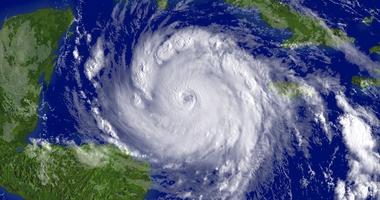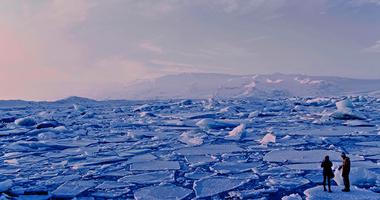
Summer’s Climate Impacts Hit Hard
To put it simply: We’re going to be seeing a lot more climate impacts – and they’re going to be more frequent and more dangerous – so long as the world keeps burning fossil fuels.
7 min read
Meteorological summer is officially here in the Global North – and with it come some of the climate crisis’ most extreme impacts.
Carbon pollution from burning fossil fuels like coal, oil, and natural gas is warming our planet and driving climate change. It’s throwing natural systems out of balance – to often devastating effect.
And for many, summertime is when those effects are most acutely felt.
What does that mean for us?
Events from heat waves and hurricanes to wildfires and drought are becoming more frequent and/or intense – and more and more people are feeling the heat.
Let’s take a look at just some of the climate impacts that ramp up during the warmest months of the year.
Extreme Heat
Extreme heat is one of the most direct and easiest to understand effects of the man-made climate crisis. It's also the number one killer among all weather-related phenomena.
By continuing to burn fossil fuels, we’re putting more greenhouse gases into the atmosphere and trapping more of the sun’s energy as heat than the planet’s inhabitants and ecosystems can safely handle. Which means things are getting warmer and warmer – fast.
Last year was the warmest on record, and already in 2024, each month so far has been the hottest January, February, March, April, and May, respectively, ever recorded.
Recently, the US southwest sweltered under a weather phenomenon called a “heat dome” that brought temperatures as high as 111° Fahrenheit to Las Vegas and 112° Fahrenheit to Phoenix, Arizona.
>> Learn more: What is a Heat Dome? <<
Now, this week, much of the US Midwest and East Coast is bracing itself for a major, long-duration heat event. In all, some 265 million Americans are forecast to see air temperatures of at least 90° Fahrenheit – and in many cases even higher.
Major cities that are facing these potentially record-setting temperatures include Chicago, Pittsburgh, Washington, DC, St. Louis, Philadelphia, New York, and Boston.
And it’s not just the US.
In late May, Mexico City endured multiple days of record-setting temperatures. A few weeks earlier, it was Asia and the Middle East’s turn.
“Sizzling heat across Asia and the Middle East in late April that echoed last year’s destructive swelter was made 45 times more likely in some parts of the continent because of human-caused climate change,” the Associated Press reports.
All before the first official day of calendar summer, June 20, even arrived.
Sadly, extreme heat isn’t just uncomfortable, it has very real impacts across sectors, including on our health and well-being.
“The frequency and intensity of extreme heat and heat waves will continue to rise in the 21st century because of climate change. Extended periods of high day and nighttime temperature conditions create cumulative stress on the human body, increasing the risk of illness and death from heat exposure,” the World Health Organization writes. “Heat waves can acutely impact large populations for short periods of time, often trigger public health emergencies, and result in excess mortality and cascading socioeconomic impacts (for example, lost work capacity and labor productivity). They can also cause loss of health service delivery capacity, when power shortages accompany heat waves and disrupt health facilities, transport and water infrastructure.”
To put it simply: We’re going to be seeing a lot more heat waves – and they’re going to be getting hotter, longer, and more dangerous – so long as the world keeps burning fossil fuels.
Tropical Storms
When it comes to hurricanes and tropical storms, the impact of rising global temperatures is clear: It adds fuel to the fire.
Average global sea surface temperatures are rising, and as sea surface temperatures become warmer, hurricanes can become more powerful. Warmer oceans, and especially increased deep ocean warmth, also fuel rapid intensification of storms, so a once-relatively weak storm can cross the right stretch of water and become a major event in a matter of hours.
At the same time, as the world becomes warmer, more water evaporates from the surface of our oceans. Making matters worse: A warmer atmosphere can hold more moisture.
“For every degree Celsius that Earth's atmospheric temperature rises, the amount of water vapor in the atmosphere can increase by about 7%,” according to NASA.
>> Learn more: Why the 2024 Hurricane Season is Expected to be so Wild <<
Since the Industrial Revolution, the earth’s average global temperature has increased by at least 1.1° Celsius (1.9° Fahrenheit), with some areas warming faster than others.
Hurricanes suck up this water vapor as they travel over the sea surface. And when they do make landfall, all of it returns to the earth’s surface as heavy precipitation.
So it’s a double whammy: Storms are becoming more powerful and carrying more and more precipitation as global temperatures continue to rise.
And we haven’t even mentioned the impact of rising sea levels on storm surge.
Land Ice Melt
So let’s do that now.
Sea-level rise caused by climate change can dramatically extend the storm surge driven by hurricanes.
Storm surge is, per the National Oceanic and Atmospheric Administration (NOAA), “the abnormal rise in seawater level during a storm, measured as the height of the water above the normal predicted astronomical tide.”
Or to put it another way, the storm surge is the ocean water pushed onto the coast by the force of the hurricane. As sea levels rise, ever-stronger storms are expected to carry water farther and farther inland.
But why are sea levels rising?
With the world is getting warmer, glaciers and other land ice are melting and pouring more and more fresh water into our oceans as a result.
In the summer months in the Global North, when temperatures are at their warmest, the massive ice sheet that covers Greenland and glacial land ice elsewhere are weakened, breaking off, and melting.
In fact, Greenland alone is now losing about 270 billion tons of ice mass per year, much of it during the warm weather months of May through September.
As for glaciers more broadly, “Among the most dramatic evidence that Earth's climate is warming is the retreat and disappearance of mountain glaciers around the world. Based on preliminary data for 2022/23, 2023 was the 36th year in a row that the reference glaciers tracked by the World Glacier Monitoring Service lost rather than gained ice.”
The bottom line: more water flowing into the oceans.
Oceans are also expanding because, well, water expands as it warms.
“Thermal expansion happens when water gets warmer, which causes the volume of the water to increase,” according to NASA’s Jet Propulsion Laboratory. “About half of the measured global sea level rise on Earth is from warming waters and thermal expansion.”
Drought
On the other side of the coin is drought made worse by our warming climate.
At the same time that some areas are experiencing more intense precipitation from powerful tropical storm systems, others are experiencing more drying and even drought, which, like so much else, is amplified by the heat of the warm-weather months.
As discussed above, as temperatures rise, evaporation increases. But when this evaporation happens over land, soils dry out. Then, when rain does come, much of the water runs off the hard ground into rivers and streams and is carried back to the sea – all while the soil remains dry.
Periods of drought caused by enhanced evaporation and decreases in overall annual rainfall in some areas can result in reduced water levels in streams, rivers, and lakes, including the reservoirs that many depend on for fresh drinking water.
A major drought can have serious consequences for people’s livelihoods, affecting everything from agriculture and transportation to public health. Then there are consequences of severe drought you might not immediately think about – like the role it plays in worsening forest fires.
Wildfires
Making the connection between global temperature rise and wildfires is pretty simple science: Droughts dry out the land, killing plant life – which then also dries out itself, becoming far easier to ignite. Then, all it takes is a stray lightning strike (which are happening more often thanks to, you guessed it, global warming), a carelessly discarded cigarette, or a campfire that gets a little too big to control and a major wildfire can be born.
And with less predictable rains, it’s harder to stop these fires once they begin.
>> Learn more: Wildfires and the Climate Crisis <<
In recent years, wildfires have been making headlines around the world.
Last year, record-breaking wildfires ravaged parts of Canada – and their smoke and soot traveled all the way to parts of the eastern and midwestern United States. At different points last summer, cities like New York and Chicago had the worst air quality in the world, owing largely to flames hundreds of miles away.
Across the Atlantic in Europe, wildfires scorched more than half a million hectares, making the 2023 wildfire season “among the worst this century,” according to Reuters.
Wildfires can leave communities and governments with billions of dollars in damages, not to mention the incalculable costs of lost plant, animal, and even human life.
It makes you wonder what this summer will bring?
What You Can Do
The good news is that we already have all of the tools that we need to address these rising temperatures and fight the climate crisis.
A community-led, just transition away from fossil fuels and toward clean energy is one way we can lower our carbon emissions and combat extreme heat, super-charged hurricanes, growing wildfires, and melting ice sheets.
This transition would mean the creation of millions of green jobs and healthier, more equitable communities.
Ready to do your part to help us get there?
It's the critical first step in phasing out fossil fuels. And a first step to a better future for all of us.




